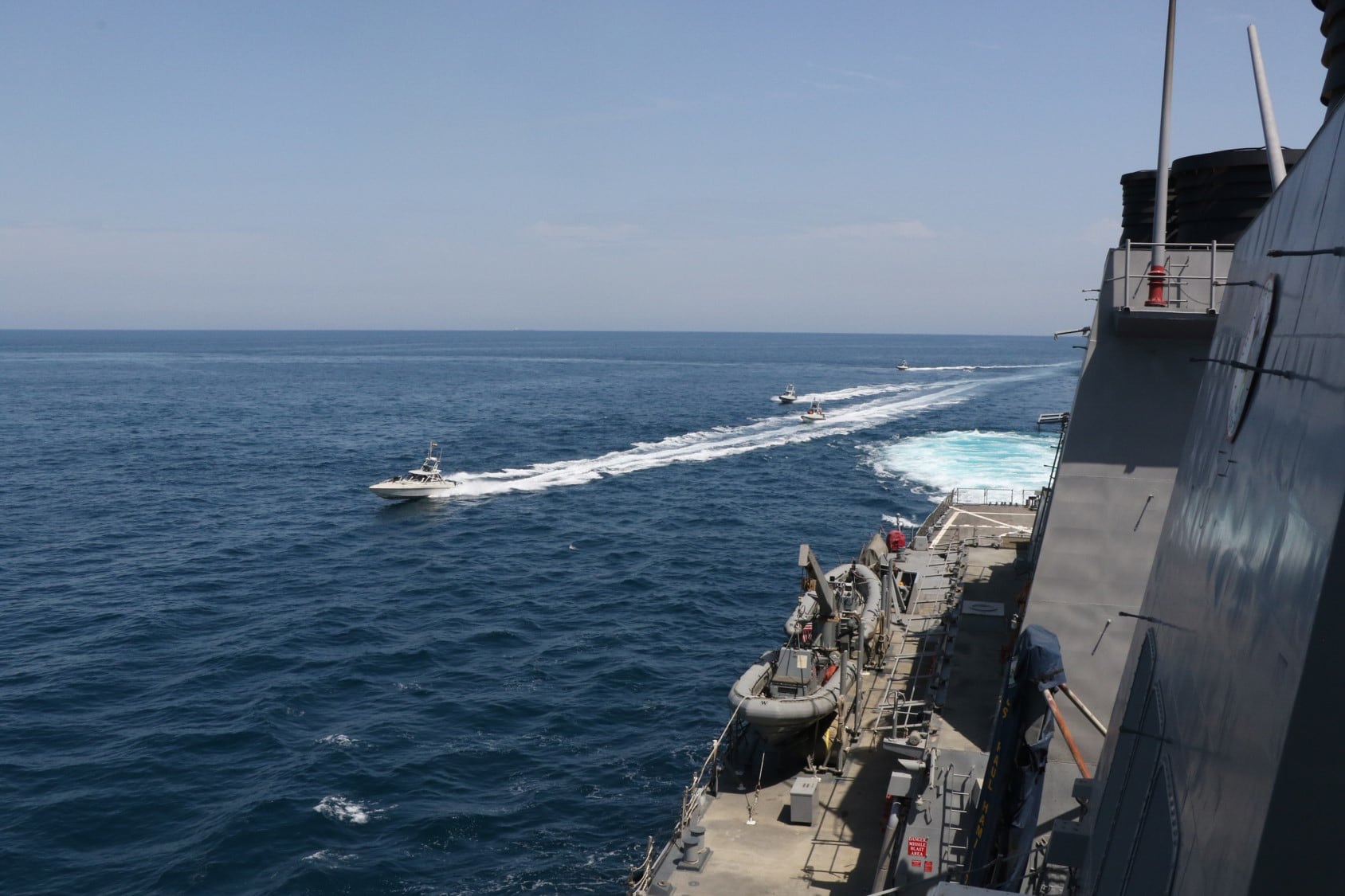President Donald Trump tweeted Wednesday that he has instructed the Navy to “destroy” any Iranian gunboats that harass American warships at sea.
Trump’s tweet comes in the wake of 11 Islamic Revolutionary Guard Corps vessels harassing six U.S. warships in the Persian Gulf on April 15.
“I have instructed the United States Navy to shoot down and destroy any and all Iranian gunboats if they harass our ships at sea,” Trump tweeted.
At the Pentagon on Wednesday, the vice chairman of the Joint Chiefs of Staff, Gen. John Hyten, a former commander of American nuclear and space forces, welcomed Trump's tweet as a useful warning to Iran. He drew a parallel between last week's naval encounter in the Gulf and Wednesday's space launch, which said was “just another example of Iranian malign behavior.”
"And it goes right along with the harassment from the fastboats. ... You put those two things together and it's just more examples of Iranian malign behavior and misbehavior,” Hyten said.
Iran considers the heavy U.S. military presence in the Middle East a threat to its security.
Trump did not cite a specific Iranian provocation in his tweet or provide details. Senior Pentagon officials gave no indication that Trump had directed a fundamental change in military policy on Iran.
“The president issued an important warning to the Iranians,” David Norquist, the deputy secretary of defense, said at a Pentagon news conference when asked about the tweet. “What he was emphasizing is, all of our ships retain the right of self defense.” Norquist called the tweet “a very useful thing.”
Officials from U.S. Central Command and U.S. Navy Forces Central Command could not immediately be reached for comment.
NAVCENT detailed in a previous news release that the IRGC vessels “repeatedly conducted dangerous and harassing approaches” of several U.S. warships while the American vessels were conducting air integration exercises with U.S. Army AH-64E Apache attack helicopters.
The 11 Iranian ships carried out an “unsafe” and “unprofessional” interaction with the following U.S. warships: the expeditionary mobile base vessel Lewis B. Puller, the Arleigh Burke-class destroyer Paul Hamilton, Cyclone-class of coastal patrol boat Firebolt, Cyclone-class patrol ship Sirocco, and Coast Guard ships Wrangell and Maui.
NAVCENT said the Iranian ships “repeatedly crossed the bows and sterns of the U.S. vessels at extremely close range and high speeds” and even came within 50 yard “closest point of approach” of the Puller and 10 yards of Maui’s bow.
The ships’ crews attempted to warn the Iranian vessels using “bridge-to-bridge radio, five short blasts from the ships’ horns and long range acoustic noise maker devices," NAVCENT said.
After roughly an hour, Iranian ships responded to the bridge-to-bridge radio signals and “maneuvered away from the U.S. ships,” NAVCENT detailed.
“The IRGCN’s dangerous and provocative actions increased the risk of miscalculation and collision, were not in accordance with the internationally recognized Convention on the International Regulations for Preventing Collisions at Sea (COLREGS) “rules of the road” or internationally recognized maritime customs, and were not in accordance with the obligation under international law to act with due regard for the safety of other vessels in the area,” NAVCENT said in the release.
RELATED

Gen. Kenneth F. McKenzie Jr., the commander of U.S. Central Command, warned in March that tensions with Tehran have not come down and may be exacerbated by the high number of COVID-19 deaths in Iran. McKenzie said CENTCOM believed Iran was under-reporting the number of COVID-19 deaths inside the country.
He cautioned that virus may be increasing pressure on Iranian leaders that could push the authoritarian regime to turn outward “to marshal against a common foe."
This story contains information from the Associated Press.
Shawn Snow is the senior reporter for Marine Corps Times and a Marine Corps veteran.




